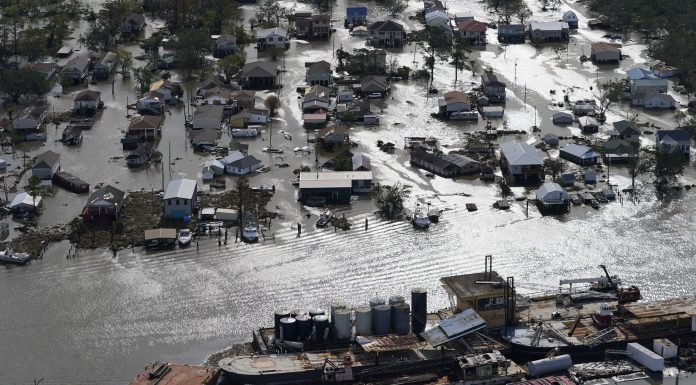(Associated Press) Louisiana communities battered by Ida faced a new danger as they began the massive task of clearing debris and repairing damage from the storm: the possibility of weeks without power in the stifling, late-summer heat.
Entergy said a crew of at least 20,000 will take several days to assess the damage in New Orleans and southeast Louisiana caused by Hurricane Ida’s landfall on Sunday.
As of Monday, nearly 900,000 customers had no power, and the New Orleans-based power company estimated that based on the damage, customers in the direct path of the storm face extended outages.
Energy and chemical companies throughout the region were surveying damage.
Exxon Mobil said its Baton Rouge Fuels Terminal in Louisiana reopened operations Monday while its Hoover platform in the Gulf of Mexico suffered no storm damage and crews are starting to resume normal operations.
Colonial Pipeline said late Monday it expected to return Lines 1 and 2 — located between Houston and Greensboro, North Carolina — to service in the evening, pending successful completion of all restart protocols.
Meanwhile, Philips 66’s refinery in Belle Chasse, Louisiana, remained shut down as of late Monday. The refinery took on some water, the company said. Its Gulf Coast lubricants plant in nearby Sulphur will reopen Tuesday.
Oil prices fell 1.3% Tuesday to $68.32 per barrel trading on the New York Mercantile Exchange.
The Environmental Protection Agency granted emergency fuel waivers for Louisiana and Mississippi through September 16. The move suspends requirements to sell low volatility gasoline which is required in the summer to limit the formation of ozone pollution.
Hurricane Ida knocked out all eight transmission lines that deliver power to New Orleans, leaving the entire city without electricity as the powerful storm pushed through on Sunday and early Monday with winds that reached 150 miles per hour. Some of the hardest-hit areas won’t see power restored for weeks. A look at what that means for the coastal city and its residents and businesses.
WHAT HAPPENED?
The hurricane blew ashore on the 16th anniversary of Katrina, the 2005 storm that breached New Orleans’ levees, devastated the city and was blamed for 1,800 deaths. The office of Louisiana Gov. John Bel Edwards said Ida caused “catastrophic” damage to the power grid, forcing hospitals, businesses and private residents to rely on generators or go without refrigeration or air conditioning even as temperatures soar to close to 90 degrees. Ida was one of the strongest storms to make landfall in Louisiana and retained hurricane status nearly to Mississippi.
Officials in New Orleans and surrounding areas were encouraging people who evacuated ahead of the storm to stay away in the immediate aftermath, because it remains unsafe to return amid downed power lines, flooded homes, snapped trees and other destruction.
WHAT WILL IT TAKE TO GET POWER BACK?
The power company that serves the region said it could be weeks before some hard-hit areas see power restored. The power company, New Orleans-based Entergy, says it is working to provide backup power for water and sewer services, and the city says it is using its own generators at drainage pumping stations, but it’s not clear how long those efforts can sustain.
More than 11,000 Entergy workers, supplemented by 25,000 workers from at least 32 states and the District of Columbia, were working to restore power. As officials begin to assess damage, power will restored in a way that gets service to the greatest number of customers as safely and quickly as possible, Entergy said.
But the company faces a massive challenge. As of early Monday, 216 substations, 207 transmission lines and more than 2,000 miles of transmission lines were out of service, the company said. One transmission tower that spans the Mississippi River and had withstood Hurricane Katrina was felled during Ida, Entergy said.
Road closures, flooding and high winds were affecting crews’ ability to reach some areas and could delay power restoration in those communities. Entergy said.
“Transmission lines are very fragile in New Orleans,” said Logan Atkinson Burke, executive director of the Alliance for Affordable Energy, an advocacy group. The group said in a 2019 report that Entergy’s aging transmission and distribution lines, complicated by the coastal region’s lakes and wetlands, result in an unusual number of outages — even without extreme weather.



